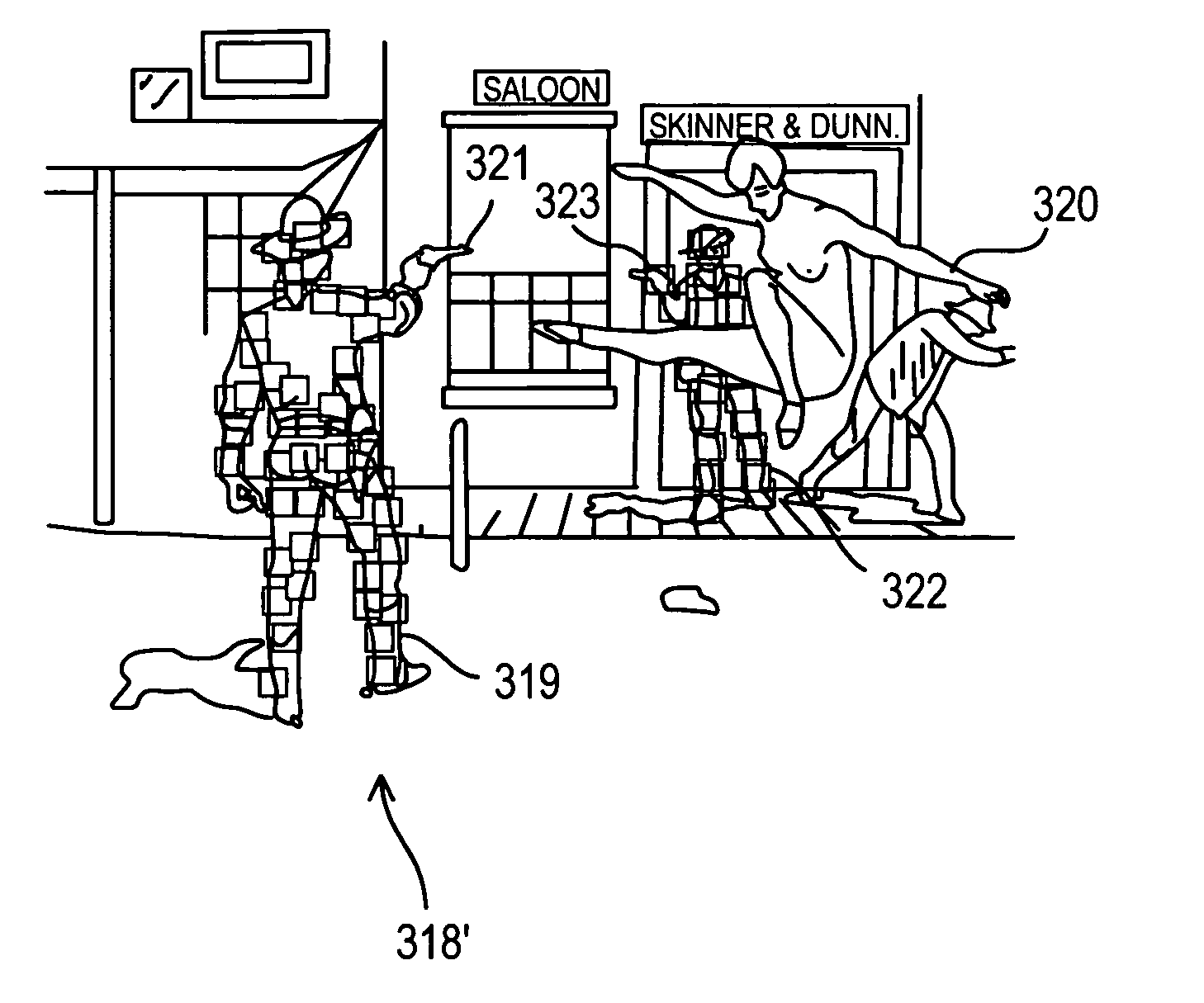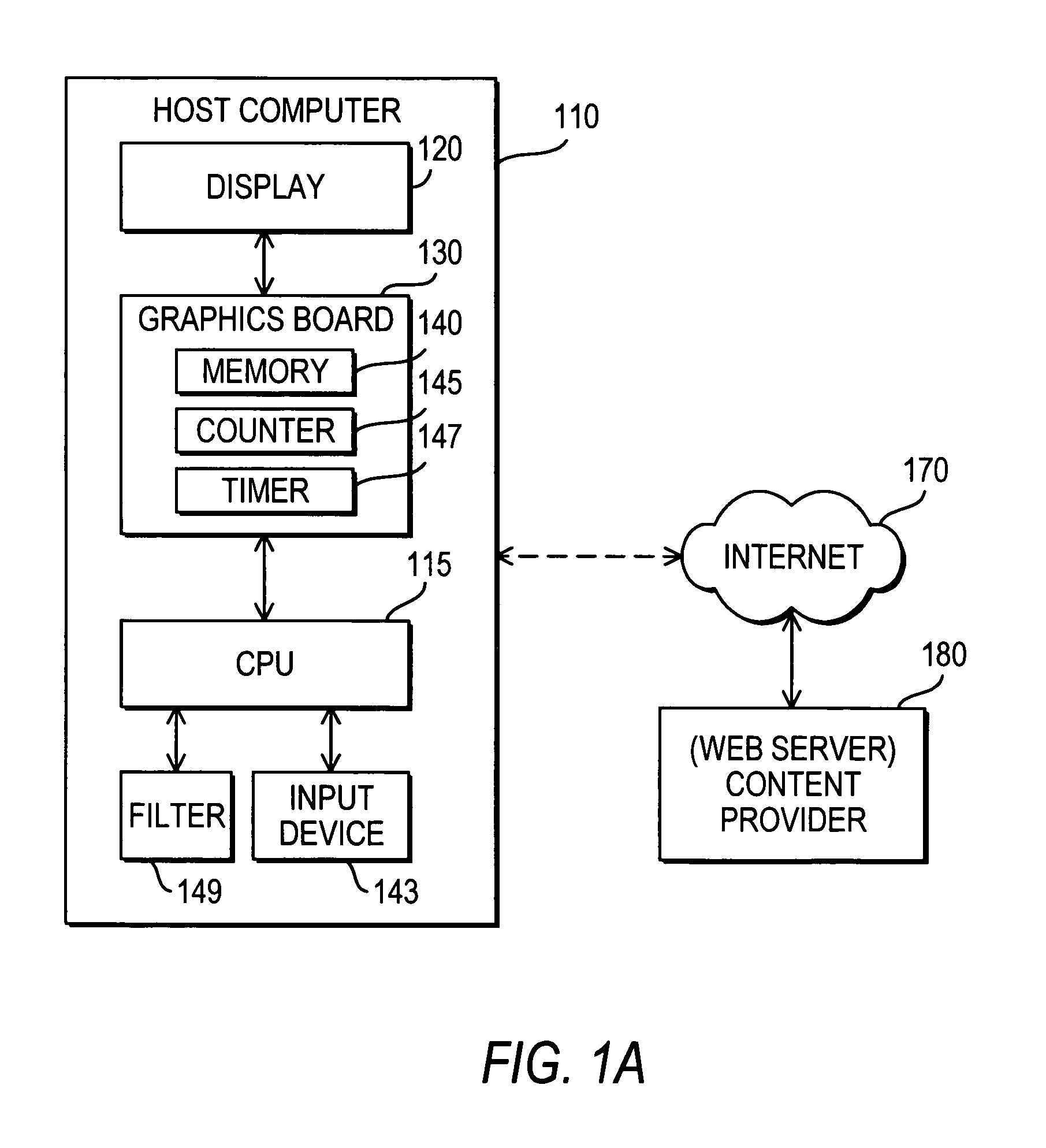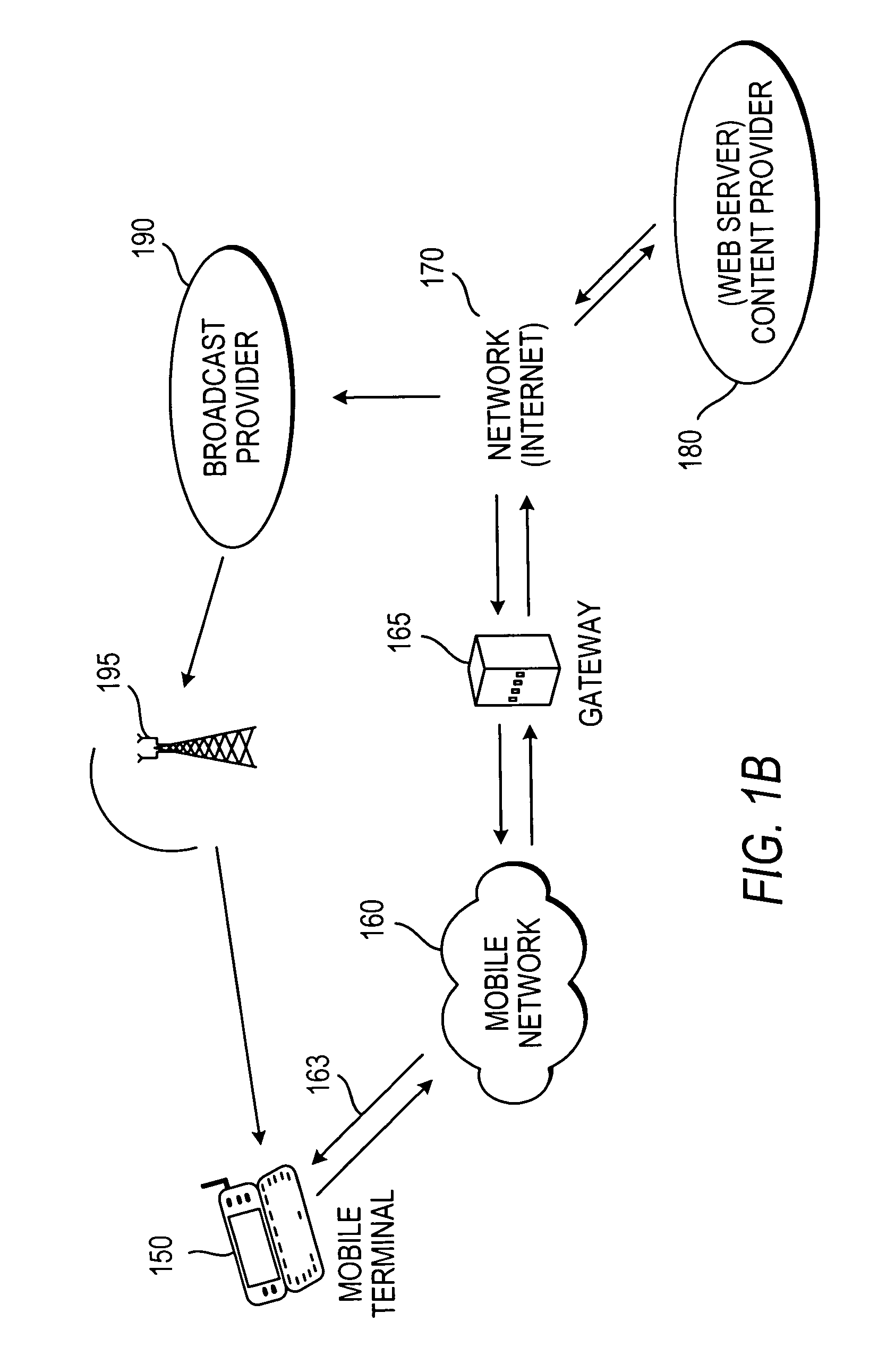Statistical metering and filtering of content via pixel-based metadata
a technology of statistic metering and content filtering, applied in the direction of selective content distribution, instruments, marketing, etc., can solve the problems of increasing too cumbersome and expensive to actually charge a consumer such a small amount of money to view a single web page, and the increase of the cost of information and services delivered electronically approaches zero
- Summary
- Abstract
- Description
- Claims
- Application Information
AI Technical Summary
Benefits of technology
Problems solved by technology
Method used
Image
Examples
Embodiment Construction
[0032]To overcome limitations in the prior art described above, and to overcome other limitations that will become apparent upon reading and understanding the present specification here is described a system and method for providing discretionary viewing control in displaying data pixel-wise and methods to meter.
[0033]In accordance with one embodiment of the invention, FIG. 1A shows a simplified drawing of a system for distribution of content having the illustrated components for practicing the present invention using a fixed terminal. The content distribution system includes a host computer 110 having a central processing unit (CPU) 115 for controlling and executing all necessary procedures, a display 120 for displaying graphics, a graphics board 130 or subsystem (integrated circuit) installed internally or externally to host computer 110 to interface between CPU 115 and display 120, and an input device 143 to enter commands, such as to order content for use at host computer 110, a...
PUM
 Login to View More
Login to View More Abstract
Description
Claims
Application Information
 Login to View More
Login to View More - R&D
- Intellectual Property
- Life Sciences
- Materials
- Tech Scout
- Unparalleled Data Quality
- Higher Quality Content
- 60% Fewer Hallucinations
Browse by: Latest US Patents, China's latest patents, Technical Efficacy Thesaurus, Application Domain, Technology Topic, Popular Technical Reports.
© 2025 PatSnap. All rights reserved.Legal|Privacy policy|Modern Slavery Act Transparency Statement|Sitemap|About US| Contact US: help@patsnap.com



